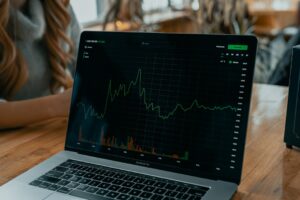Understanding Forex Trading Means: A Comprehensive Guide for Beginners
Forex trading, also known as foreign exchange trading, is the buying and selling of different currencies in the global marketplace. It is the largest and most liquid financial market in the world, with an average daily trading volume of over $6 trillion. Forex trading offers individuals the opportunity to profit from fluctuations in currency prices, and with the right knowledge and strategy, it can be a lucrative venture. However, for beginners, understanding the ins and outs of forex trading can seem overwhelming. This comprehensive guide aims to break down the key concepts and provide a solid foundation for beginners looking to enter the forex market.
1. What is Forex Trading?
Forex trading involves the simultaneous buying of one currency and selling of another. Currencies are traded in pairs, such as EUR/USD (Euro/US Dollar), GBP/USD (British Pound/US Dollar), and USD/JPY (US Dollar/Japanese Yen). The exchange rate between the two currencies in a pair determines how much of the quote currency (the second currency in the pair) is needed to buy one unit of the base currency (the first currency in the pair). Forex trading is conducted electronically over-the-counter (OTC), meaning there is no central exchange or physical location.
2. Market Participants
Various participants contribute to the forex market’s liquidity and volatility. These include commercial banks, central banks, hedge funds, multinational corporations, and individual traders. Central banks play a significant role in influencing currency rates through monetary policy decisions. Major currency pairs, such as EUR/USD and USD/JPY, are the most actively traded due to their high liquidity.
3. Forex Terminology
To navigate the forex market, understanding the essential terminology is crucial. Some key terms include:
– Pip: The smallest unit of price movement in a currency pair. It represents the fourth decimal place in most currency pairs.
– Lot: A standardized trading unit. A standard lot consists of 100,000 units of the base currency, while a mini lot is 10,000 units and a micro lot is 1,000 units.
– Spread: The difference between the bid (selling) and ask (buying) price. It represents the cost of executing a trade.
– Margin: The collateral required to open and maintain a position. It allows traders to control larger positions with a smaller amount of capital.
4. Trading Strategies
Successful forex trading requires the development of a solid trading strategy. Some popular strategies include:
– Technical Analysis: Utilizing historical price data and indicators to identify patterns and predict future price movements.
– Fundamental Analysis: Analyzing economic, political, and social factors that influence currency values and making trading decisions based on this information.
– Risk Management: Implementing strategies to minimize potential losses, such as setting stop-loss orders and proper position sizing.
5. Trading Platforms and Tools
To execute trades, traders need access to a trading platform provided by a broker. The platform should offer real-time price charts, technical analysis tools, and order placement capabilities. Additionally, various third-party tools and resources can assist traders in their decision-making process, such as economic calendars, news feeds, and trading signals.
6. Demo Accounts and Education
Before risking real money, beginners should practice trading using a demo account. Demo accounts allow traders to trade with virtual money and simulate real market conditions. It is an excellent way to test strategies, gain experience, and understand the platform’s features. Additionally, there are numerous educational resources available, including online courses, webinars, and forums, that provide in-depth knowledge about forex trading.
7. Risk and Money Management
Forex trading involves risks, and it is important for beginners to understand and manage these risks effectively. Risk management involves setting stop-loss orders to limit potential losses and using proper position sizing techniques. Money management ensures that traders allocate an appropriate percentage of their trading capital to each trade, reducing the risk of significant losses.
8. Emotional Control and Discipline
Maintaining emotional control and discipline is crucial in forex trading. Traders should avoid making impulsive decisions based on emotions such as fear or greed. Developing a trading plan and sticking to it, regardless of market conditions, is key to long-term success.
In conclusion, forex trading can be a lucrative endeavor for beginners, provided they have a solid understanding of the market, develop a sound trading strategy, and practice proper risk and money management. By familiarizing themselves with the essential concepts and utilizing the available educational resources, beginners can embark on their forex trading journey with confidence. Remember, trading is a continuous learning process, and staying updated with market trends and developments is essential for ongoing success.





